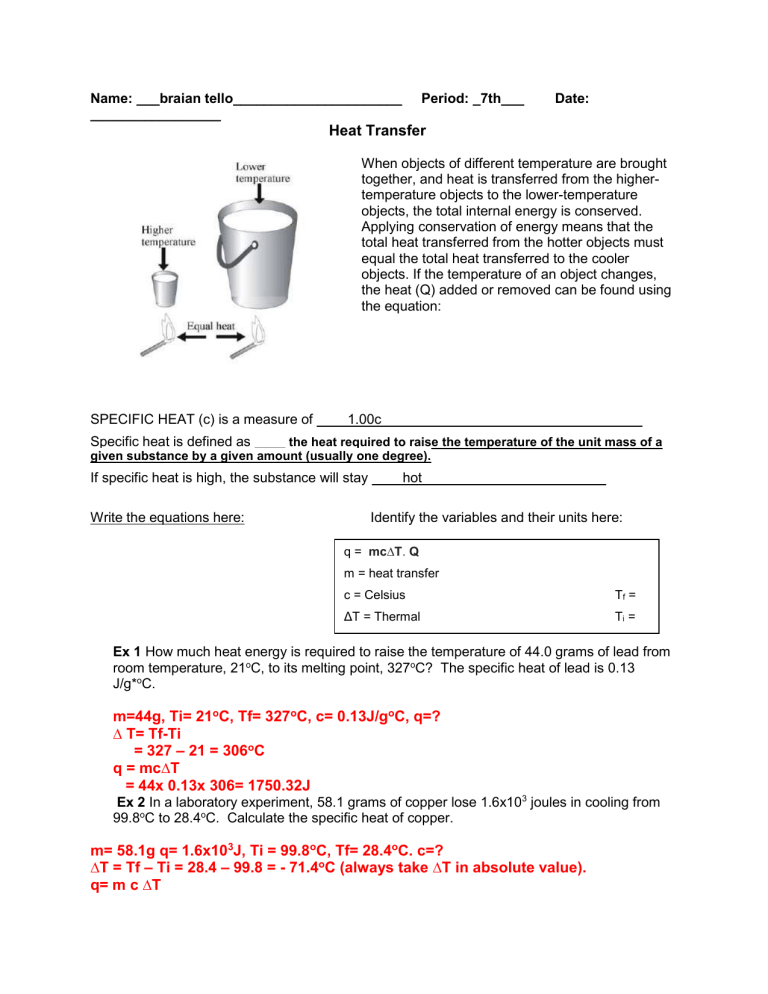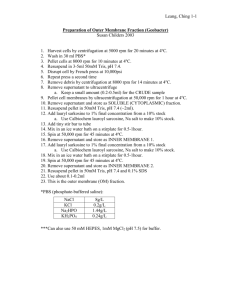Heat Transfer and Specific Heat Fill in Note Sheet With Answered Examples
advertisement

Name: ___braian tello______________________ _________________ Period: _7th___ Date: Heat Transfer When objects of different temperature are brought together, and heat is transferred from the highertemperature objects to the lower-temperature objects, the total internal energy is conserved. Applying conservation of energy means that the total heat transferred from the hotter objects must equal the total heat transferred to the cooler objects. If the temperature of an object changes, the heat (Q) added or removed can be found using the equation: SPECIFIC HEAT (c) is a measure of ____1.00c__________________________________ Specific heat is defined as ____ the heat required to raise the temperature of the unit mass of a given substance by a given amount (usually one degree). If specific heat is high, the substance will stay ____hot________________________ Write the equations here: Identify the variables and their units here: q = mc∆T. Q m = heat transfer c = Celsius Tf = ΔT = Thermal Ti = Ex 1 How much heat energy is required to raise the temperature of 44.0 grams of lead from room temperature, 21oC, to its melting point, 327oC? The specific heat of lead is 0.13 J/g*oC. m=44g, Ti= 21oC, Tf= 327oC, c= 0.13J/goC, q=? ∆ T= Tf-Ti = 327 – 21 = 306oC q = mc∆T = 44x 0.13x 306= 1750.32J Ex 2 In a laboratory experiment, 58.1 grams of copper lose 1.6x103 joules in cooling from 99.8oC to 28.4oC. Calculate the specific heat of copper. m= 58.1g q= 1.6x103J, Ti = 99.8oC, Tf= 28.4oC. c=? ∆T = Tf – Ti = 28.4 – 99.8 = - 71.4oC (always take ∆T in absolute value). q= m c ∆T 1.6x103 = 58.1 x c x 71.4 1600 = 4148.34 c C= 1600/ 4148.34 = 0.386J/goC


